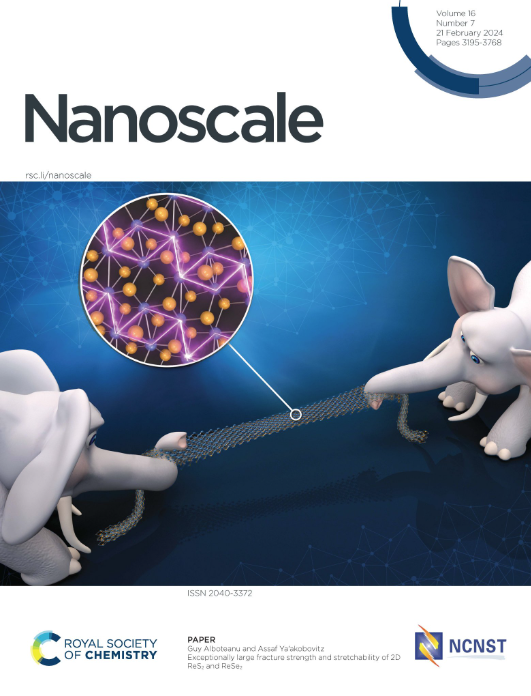PEGylated Lipid Screening, Composition Optimization, and Structure-Activity Relationship Determination for Lipid Nanoparticle-Mediated mRNA Delivery
IF 5.8
3区 材料科学
Q1 CHEMISTRY, MULTIDISCIPLINARY
引用次数: 0
Abstract
Lipid nanoparticles (LNPs) have emerged as effective carriers for mRNA delivery in vaccine and therapeutic applications, attracting substantial attention since the COVID-19 pandemic. Continued efforts are crucial to optimize LNP composition for improved delivery efficacy and to elucidate the underlying mechanisms driving differences in protein expression. This study systematically screened PEGylated lipids for intramuscular mRNA delivery, followed by optimization of the formulation composition, physiochemical characterization, and investigation of the structure-activity relationship (SAR). Using a model ionizable lipid, we initially evaluated twenty-nine PEGylated lipids from four lipid families (glyceride, phosphoethanolamine (PE), cholesterol, and ceramide), each varying in linker chemistries, tail structures, or PEG molecular weights. 1,2-Dimyristoyl-rac-glycero-3-methoxypolyethylene glycol - 5000 (DMG-PEG5k) was identified as a promising candidate from this screening. Using a Design of Experiments (DoE) approach, we further optimized the formulation to increase in vivo transfection efficacy, achieving increase in protein expression over the DMG-PEG2k benchmark. To explore SAR of the DoE formulations, advanced physiochemical characterizations were conducted including Laurdan assay, SAXS, Cryo-TEM, and QCM-D, alongside standard LNP analysis. Among the key factors examined, high mRNA encapsulation efficiency, LNP membrane integrity (especially under acidic conditions), and ordered internal structures were identified as the critical parameters for transfection efficiency. mRNA encapsulation efficiency increased with a lower PEG-lipid fraction. LNP membrane integrity, assessed by the generalized polarization (GP) ratio at pH 7.5 and 4.5 from the Laurdan assay, was strongly affected by the ionizable lipid ratio and, to a lesser extent, the cholesterol ratio. A lower GP7.5/GP4.5 ratio correlated with enhanced protein expression, primarily driven by a higher GP4.5 observed with lower ionizable lipid and higher cholesterol fractions. Overall, balancing the ratios of all LNP components is critical for maximizing LNP functionality. This study presents a systematic evaluation and characterization of LNPs with different PEG-lipid moieties, deepens SAR understanding, and provides valuable guidelines for rationally designing more effective next-generation LNPs.自 COVID-19 大流行以来,脂质纳米颗粒(LNPs)已成为疫苗和治疗应用中传递 mRNA 的有效载体,引起了广泛关注。继续努力优化 LNP 成分以提高递送效果并阐明驱动蛋白质表达差异的潜在机制至关重要。本研究系统地筛选了用于肌内递送 mRNA 的 PEG 化脂质,随后优化了制剂成分、进行了理化表征并研究了结构-活性关系(SAR)。我们使用一种可电离脂质模型,初步评估了来自四个脂质家族(甘油、磷脂醇胺 (PE)、胆固醇和神经酰胺)的 29 种 PEG 化脂质,每种脂质的链接化学成分、尾部结构或 PEG 分子量都各不相同。通过筛选,1,2-二肉豆蔻酰-rac-甘油-3-甲氧基聚乙二醇-5000(DMG-PEG5k)被确定为有希望的候选物质。利用实验设计(DoE)方法,我们进一步优化了配方,以提高体内转染功效,使蛋白表达量超过 DMG-PEG2k 基准。为了探索 DoE 配方的 SAR,我们在进行标准 LNP 分析的同时,还进行了先进的理化表征,包括劳尔丹分析、SAXS、Cryo-TEM 和 QCM-D。在研究的关键因素中,高 mRNA 封装效率、LNP 膜完整性(尤其是在酸性条件下)和有序的内部结构被确定为转染效率的关键参数。LNP 膜的完整性(通过劳尔丹测定法得出的 pH 值为 7.5 和 4.5 时的广义极化(GP)比率来评估)受可电离脂质比率的影响很大,其次是胆固醇比率。GP7.5/GP4.5比率越低,蛋白质表达量越高,这主要是由于可电离脂质和胆固醇组分越低,GP4.5比率越高。总之,平衡所有 LNP 成分的比例对于最大限度地发挥 LNP 功能至关重要。本研究对含有不同 PEG 脂质分子的 LNP 进行了系统的评估和表征,加深了对 SAR 的理解,并为合理设计更有效的下一代 LNP 提供了宝贵的指导。
本文章由计算机程序翻译,如有差异,请以英文原文为准。
求助全文
约1分钟内获得全文
求助全文
来源期刊

Nanoscale
CHEMISTRY, MULTIDISCIPLINARY-NANOSCIENCE & NANOTECHNOLOGY
CiteScore
12.10
自引率
3.00%
发文量
1628
审稿时长
1.6 months
期刊介绍:
Nanoscale is a high-impact international journal, publishing high-quality research across nanoscience and nanotechnology. Nanoscale publishes a full mix of research articles on experimental and theoretical work, including reviews, communications, and full papers.Highly interdisciplinary, this journal appeals to scientists, researchers and professionals interested in nanoscience and nanotechnology, quantum materials and quantum technology, including the areas of physics, chemistry, biology, medicine, materials, energy/environment, information technology, detection science, healthcare and drug discovery, and electronics.
 求助内容:
求助内容: 应助结果提醒方式:
应助结果提醒方式:


